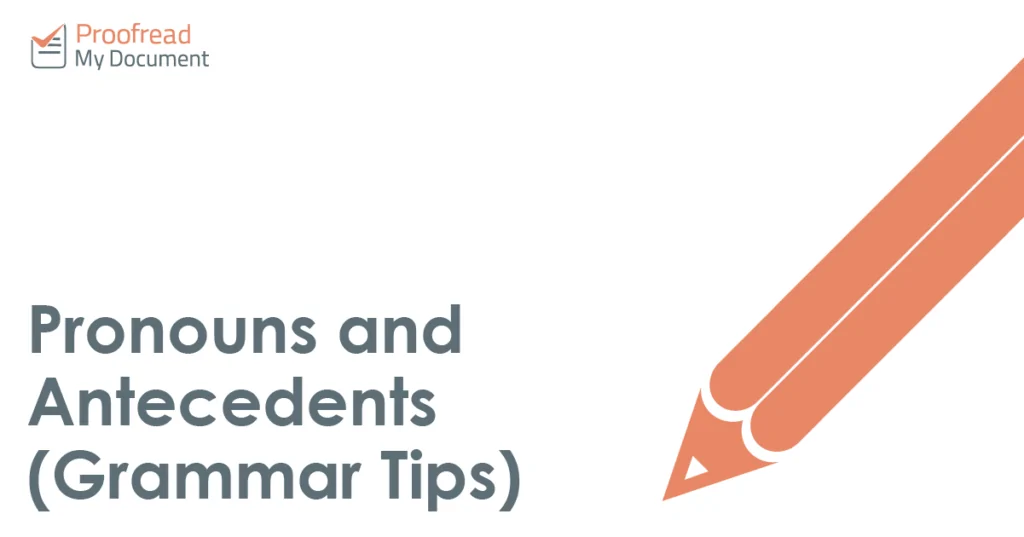Pronouns can be picky things, so you don’t want to mix them with the wrong words! But what are the rules behind this? And which pronouns go with which words? Well, with our guide to pronouns and antecedents, you can be confident about keeping your writing error free.
What Are Pronouns and Antecedents?
We use pronouns to replace another noun in a sentence, usually to prevent repetition. For example, we might say:
The cat slept in its bed.
The word that a pronoun replaces is known as its antecedent. In the sentence above, we have the antecedent noun ‘cat’ and the possessive pronoun ‘its’. The pronoun here means we can refer to the cat twice without having to repeat ‘cat’. The alternative would be writing:
The cat slept in the cat’s bed.
This sentence is less clear: is it the same cat in both cases? Or is the first cat sleeping in another cat’s bed? In this case, using a pronoun is very helpful.

Pronoun–Antecedent Agreement
We’ve discussed subject–verb agreement before on this blog, and pronoun–antecedent agreement is similar. It essentially means that singular pronouns should be used with singular nouns, while plural pronouns should be used with plural nouns. If we mix the two up, it becomes ungrammatical:
The girls handed in their homework. – Correct
The girls handed in her homework. – Incorrect
The second sentence above is incorrect because it uses a plural noun (girls) with a singular pronoun (her). The first sentence, on the other hand, is grammatical because the noun and pronoun agree.
Find this useful?
Subscribe to our newsletter and get writing tips from our editors straight to your inbox.
It can be tricky to work this out sometimes (e.g. with collective nouns, which can sometimes be singular or plural). The key is that, if the noun is treated as singular, it requires a singular pronoun.
Clarity Is Key!
The other crucial factor with pronoun use is clarity. If the reader is not sure what a pronoun refers to, they won’t be able to follow your writing. You therefore need to make sure the antecedent is clear.
An example sentence will help us explain what we mean here:
Bob called out to Tim as he danced past the window.
We can see here that Bob is calling out to Tim (that much is clear). But because the pronoun ‘he’ could refer to either Bob or Tim, we don’t know who is dancing past the window.
This could be clarified by replacing the pronoun with the correct name. However, to avoid repetition, we could also restructure the sentence:
As Bob danced past the window, he called out to Tim.
Here, by separating ‘Bob’ and ‘Tim’ in the sentence, we can clearly see that the pronoun refers to ‘Bob’. Thus, the mystery of the dancing pronoun was solved! Dance on, Bob, dance on!



